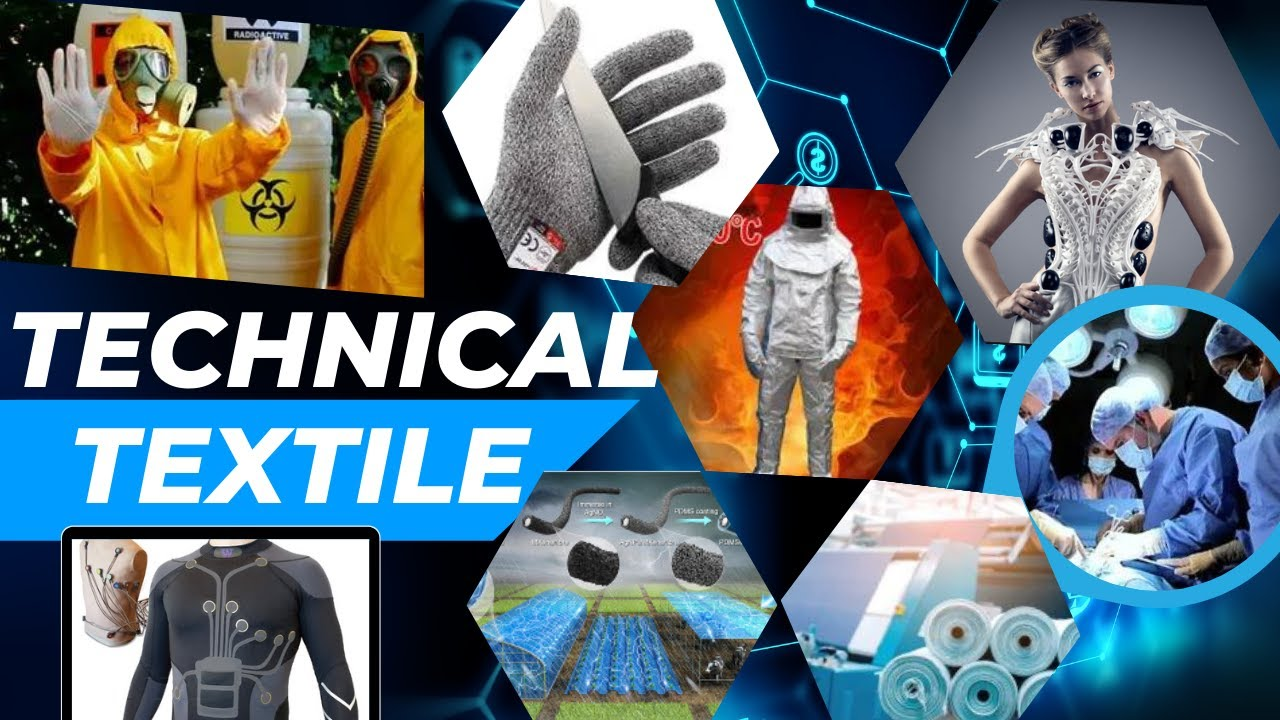Description

Copyright infringement not intended
Context: The global technical textile market is expected to reach USD 272.3 billion by 2030, with a projected Compound Annual Growth Rate (CAGR) of 4.7% from 2023 to 2030.
Details
- Technical textiles are materials that are designed and manufactured for specific functions, rather than for aesthetic or decorative purposes. They have enhanced properties and performance characteristics, such as strength, durability, resistance, protection, and functionality.
- Technical textiles can be made from various types of materials, such as natural fibres (e.g., cotton, wool, silk), synthetic polymers (e.g., polyester, nylon, polypropylene), metals (e.g., steel, aluminium), minerals (e.g., glass, carbon), and others. They can also undergo various manufacturing processes, such as thermo-forming, 3D weaving, and nanotechnology, to create different product forms, such as fabric, fibre, and yarn.
Technical textiles have a wide range of applications
- Agriculture: Technical textiles are used in agriculture for purposes such as crop protection, soil erosion control, water management, and greenhouse cultivation. Examples of agro textiles are shade nets, mulch mats, anti-hail nets, etc.
- Construction: Technical textiles are used in construction for purposes such as reinforcement, insulation, roofing, fire protection, and noise reduction. Examples of building tech textiles are geotextiles, geomembranes, roofing membranes, etc.
- Medical: Technical textiles are used in medicine for purposes such as wound care, infection prevention, implantable devices, and personal protective equipment. Examples of MedTech textiles are bandages, sutures, artificial organs, surgical masks, etc.
- Automotive: Technical textiles are used in automotive for purposes such as lightweight, sound absorption, thermal management, and safety. Examples of mobile tech textiles are seat belts, airbags, tire cords, etc.
- Aerospace: Technical textiles are used in aerospace for purposes such as structural components, thermal protection, electrical conductivity, and radar absorption. Examples of Aerotech textiles are carbon fibre composites, ceramic fabrics, metallic meshes, etc.
- Defence: Technical textiles are used in defence for purposes such as camouflage, ballistic protection, chemical and biological warfare protection, and stealth technology. Examples of Protech textiles are bulletproof vests, gas masks, infrared cloaks, etc.
These are just some of the examples of the applications of technical textiles. Many more sectors and industries use technical textiles for various purposes.
What is the size and growth of the global technical textile market?
- According to a recent report by Grand View Research, the global technical textile market is expected to reach USD 272.3 billion by 2030, with a projected Compound Annual Growth Rate (CAGR) of 4.7% from 2023 to 2030. The report identifies several factors that are driving the growth of the market: The demand for high-performance textiles is growing in industries like automotive, construction, healthcare, aerospace, and defence, due to their superior properties and functionalities.
- The emphasis on lightweight and durable materials in the aerospace and defence sectors is further contributing to the market's expansion, as technical textiles offer advantages such as fuel efficiency, reduced emissions, and enhanced safety.
- The adoption of sustainable and eco-friendly materials in technical textiles is gaining traction, driven by environmental responsibility and circular economy practices.
- Technical textiles can help reduce waste generation, energy consumption, and greenhouse gas emissions by using renewable resources, recycled materials, and biodegradable products.
- The integration of nanotechnology and advanced coatings in technical textiles is on the rise, enhancing functionalities like water resistance, antibacterial properties, and UV protection. Nanotechnology can also help create novel materials with improved mechanical, electrical, and optical properties.

Conclusion
- Technical textiles are materials that are designed and manufactured for specific functions, rather than for aesthetic or decorative purposes. They have a wide range of applications across diverse sectors and industries, such as agriculture, construction, medical, automotive, aerospace, and defence. The market is driven by factors such as the demand for high-performance textiles, the emphasis on lightweight and durable materials, the adoption of sustainable and eco-friendly materials, and the integration of nanotechnology and advanced coatings. The market is segmented by product type, application, and region. The market is also witnessing some key developments such as acquisitions by major players in the industry.
Must Read Articles:
National Textile Mission: https://www.iasgyan.in/daily-current-affairs/national-textile-mission
Technical Textiles Sector: https://www.iasgyan.in/daily-current-affairs/technical-textiles-sector
|
PRACTICE QUESTION
Q. What is the significance of technical textiles in various industries, and how do they impact sectors like automotive, healthcare, and construction? Additionally, what challenges does the technical textile industry face, and what strategies can be employed to overcome these challenges and pave the way forward for further advancements in this field?
|
https://indiashorts.com/technical-textile-market-set-to-soar-past-usd-272-3-billion-by-2030-skyquest-technology/137728/













